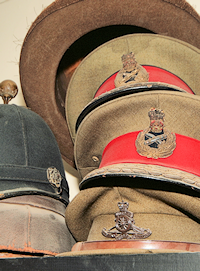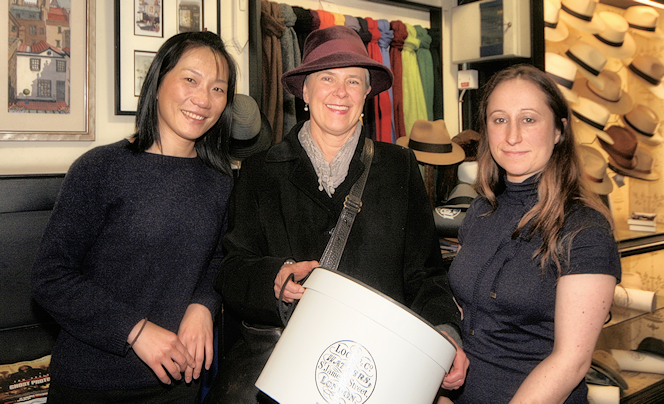James Lock
Hat couture
Lock & Co., 6 St James’s Street, SW1

In 1676 Robert Davis, a hatter from Bishopsgate, leased five houses on the west side of St James’s Street and set up shop in one of them, drawing eminent customers from the newly fashionable coffee shops nearby and from the Court of St James’s. James Lock entered into an apprenticeship at the hatters in 1747 and subsequently married into the Davis family. He inherited the business in 1759 and six years later acquired new premises across the road at 6 St James’s Street, where the firm remains today and in which indirect descendants of Robert Davis and James Lock are still partners.
Not only do Lock and Co. sell a lot of tweed caps and bowler hats, they actually originated them, one way or another. The woollen cloth used for the caps was originally called ‘tweel’, the Scots form of ’twill’, but when the manufacturer sent a consignment to Lock’s, in 1826, the name was badly written and misread, and as the cloth was made on the banks of the River Tweed, ‘tweed’ was accordingly adopted.
The bowler hat was created by Lock & Co. in response to a request from a Norfolk-based customer, William Coke, whose tall riding hat was too frequently swept off by overhanging branches. There’s disagreement about the origin of the word ‘bowler’: some authorities give the credit to the hat’s designer, supposedly one John Bowler, others to the suppliers of the felt, said to have been Thomas and William Bowler. Lock’s prefer to call the bowler hat a ‘Coke’.
Like nearby Fox’s (as it’s now called), Lock’s were one of Winston Churchill’s favourite suppliers, and they made his distinctive ‘chimney-pot’ hats to his own specification.
In Churchill’s day the company was famously conservative in all its ways of doing business, keeping longhand ledgers and apparently being ‘discreetly offended’ if a customer offered to pay in cash. Lock’s operate in a more 21st-century way now (even maintaining a Facebook page) but they still sell all the traditional styles of hat – for both men and women – plus some couture millinery and a range of hipper headgear called the Lock & Roll collection. A small section at the rear of the store is named the Country Room, because its stock consists almost entirely of flat, tweed caps.
Sadly, the shop doesn’t have the space to display much in the way of memorabilia; there’s just a single shelf of vintage hats, caps and helmets – mostly military – above the sales counter, out of reach and without any kind of descriptive labelling.

James Lock & Co. Ltd, 6 St. James’s Street, London SW1A 1EF
Phone: 020 7930 8874
Website: www.lockhatters.co.uk
Open: Monday–Friday 9.00am–5.30pm; Saturday 9.30am–5.00pm
Nearest station: Green Park (Jubilee, Piccadilly and Victoria lines)
NearbyJJ Fox
A Welsh Baronet and MP entered the shop of Lock & Lincoln, in St James’s Street, to purchase a hat. The foreman could not find one sufficiently large for the Baronet’s head, and stated that he only knew one person whose head was so large.
“Who is that person?” asked the indignant Welshman.
The foreman replied, “It is no other than the great minister, Sir Robert Peel.”
“Oh! oh!” exclaimed Taffy, “You make hats for that Radical, do you? Well, then, it shall never be said that you have sold me a hat. I have a horror of such men as your great ministers.” And the baronet left the shop in dudgeon, much to the wonder and astonishment of the hatter.
Rees Howell Gronow, Captain Gronow’s Last Recollections, 1866

